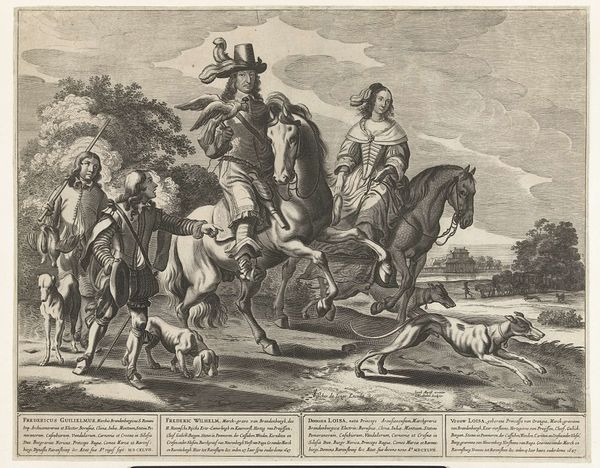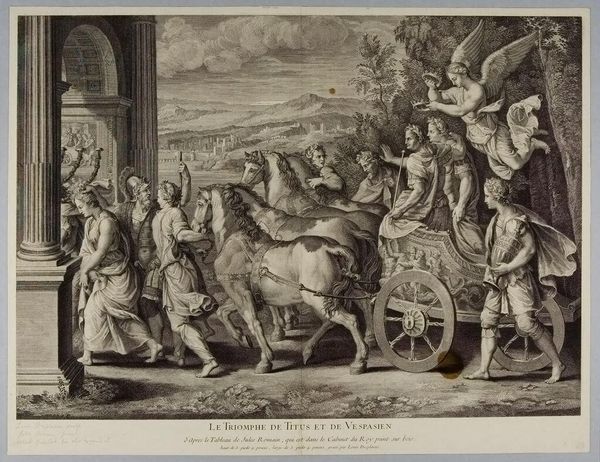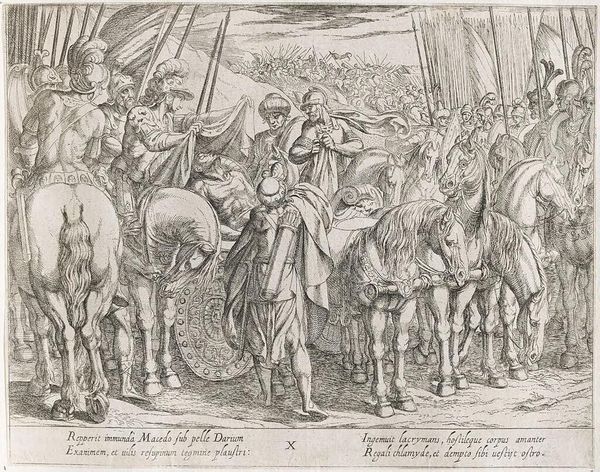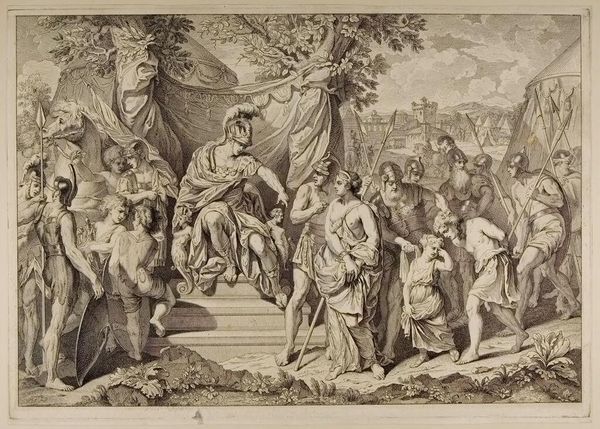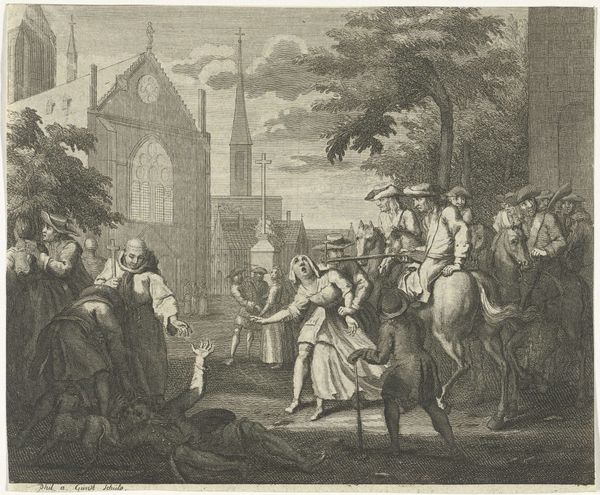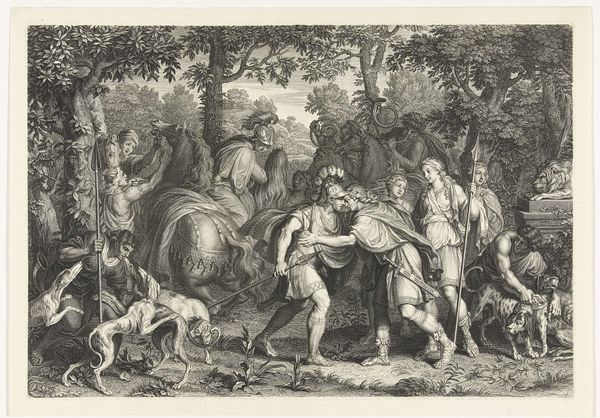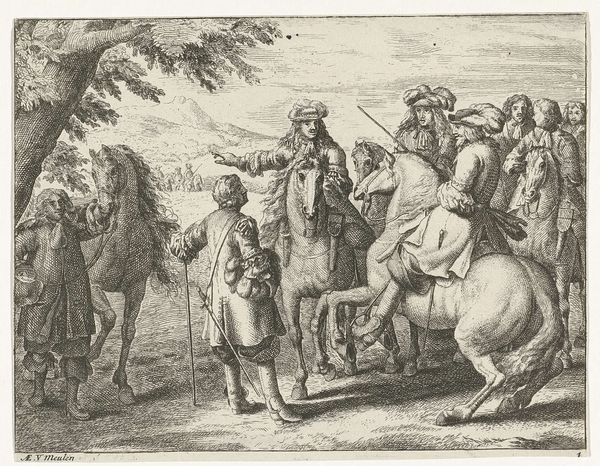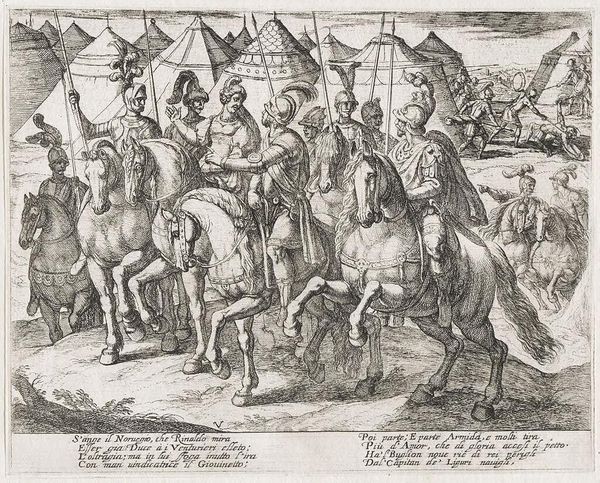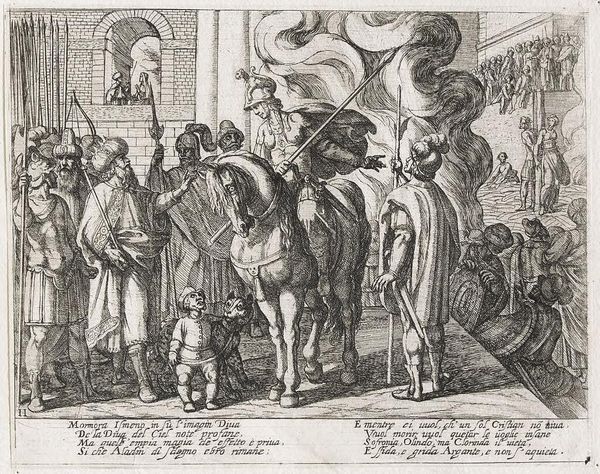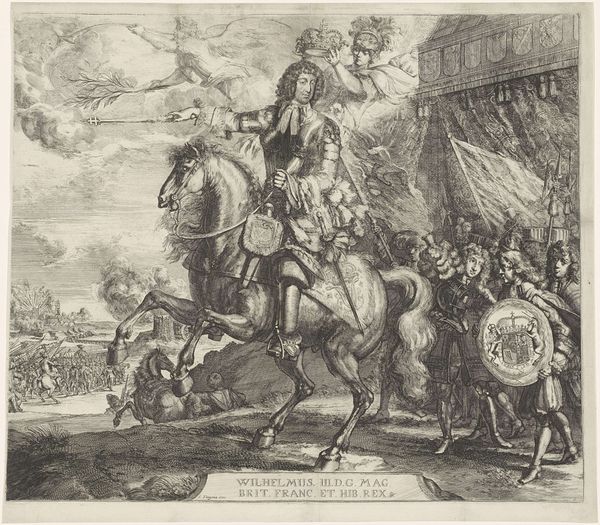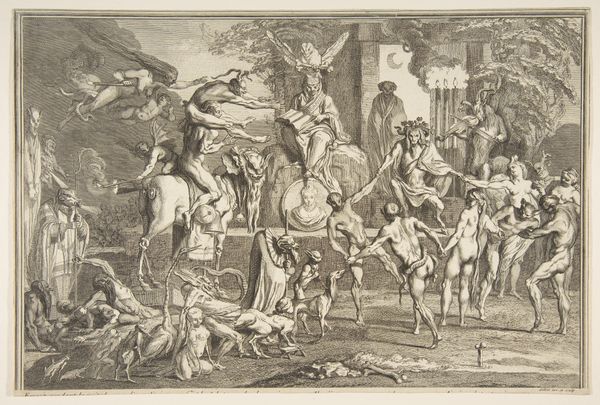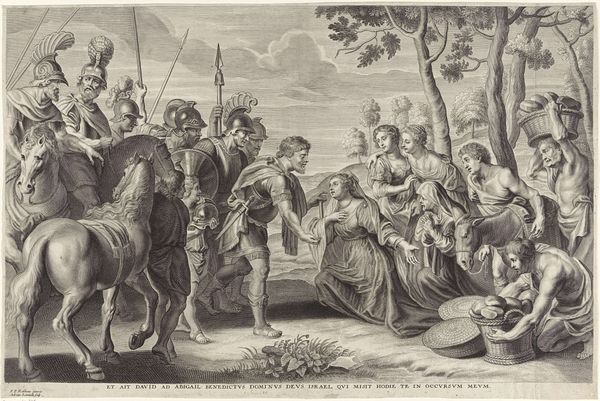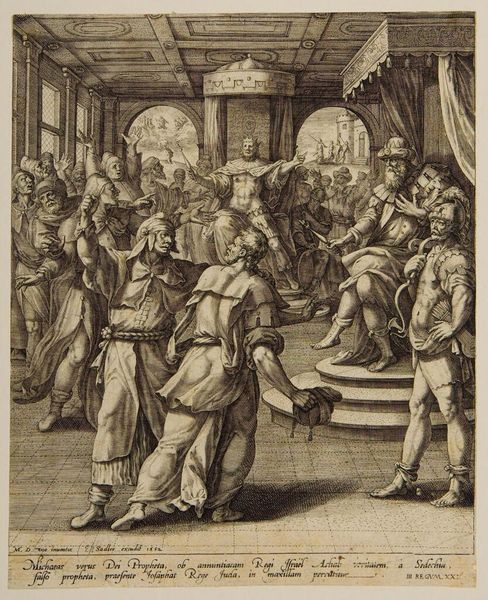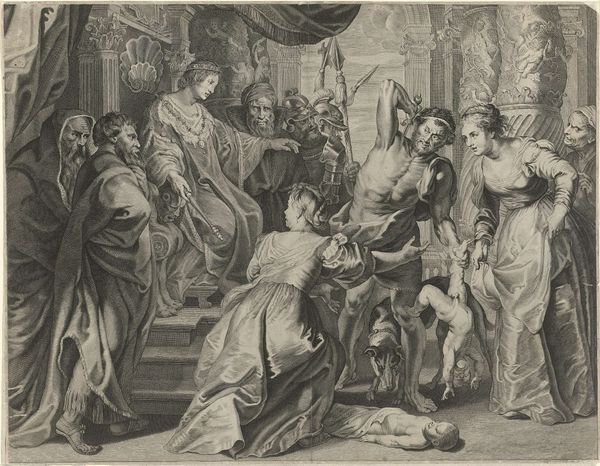
Tableau De La "famille Colbert", Sans Précision Sur Les Personnages Représentés 1683
0:00
0:00
oil-paint
#
baroque
#
oil-paint
#
landscape
#
oil painting
#
animal portrait
#
history-painting
#
portrait art
#
erotic-art
Copyright: Public domain
Curator: This artwork, “Tableau De La "famille Colbert", Sans Précision Sur Les Personnages Représentés," was painted in 1683 by Adam van der Meulen. What strikes you about this scene? Editor: The dynamism is remarkable! The glossy oil paint seems to capture both the stiff formality and the vibrant, fleeting energy of this royal procession. Curator: Indeed. Van der Meulen, known for his history paintings, particularly of Louis XIV's military campaigns, offers us here a glimpse into the French court. Note how the composition situates them within a structured, manicured landscape. It speaks volumes about control, both artistic and political. Editor: It's interesting how the luxurious fabric – those striking red capes – pulls the eye through the composition, creating movement and suggesting both wealth and power. The raw materials and production behind such garments surely mirror the immense resources dedicated to maintaining this royal image. Curator: Precisely! And that image was very carefully crafted. The theatrical presentation with figures on a balcony echoes classical traditions. Think about the historical context; Louis XIV’s reign and his manipulation of public imagery. These paintings played a crucial role in projecting an image of power. Editor: Considering the pigment available during that time and its application, it is astonishing how alive it feels even now, all those centuries later! One can just imagine the workshops where these paintings and textiles were produced. I’m keen to think more about labor required to project such grand authority and leisure. Curator: Good point. Remember, royal patronage essentially fueled artistic production during this period, which has strong links to class dynamics of the period. Van der Meulen wasn't merely an artist; he was a functionary in this vast machine of representation. Editor: It does make me wonder what he saw from his perspective. Seeing a spectacle such as this from a point of privileged, but also instrumental labor provides another view into its inherent structures of class and power. Curator: Exactly. He's simultaneously capturing the spectacle and actively contributing to its construction. Editor: Reflecting on van der Meulen's use of oil paint helps me understand this display of opulence not only visually, but through its materiality as well. Curator: Yes, seeing this courtly gathering not just as a frozen moment, but as part of a broader political theater, underscores the role of art in shaping perceptions of power.
Comments
No comments
Be the first to comment and join the conversation on the ultimate creative platform.
